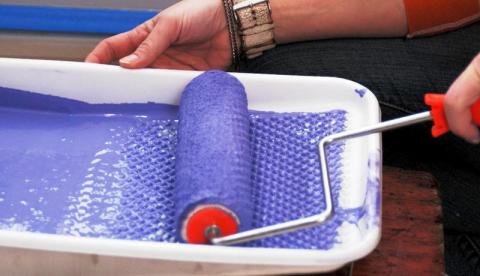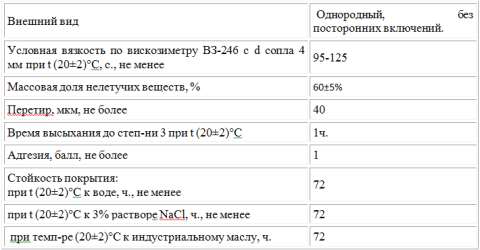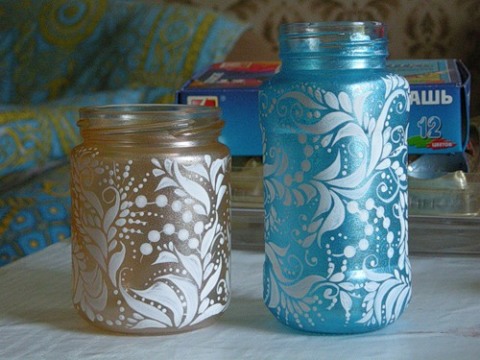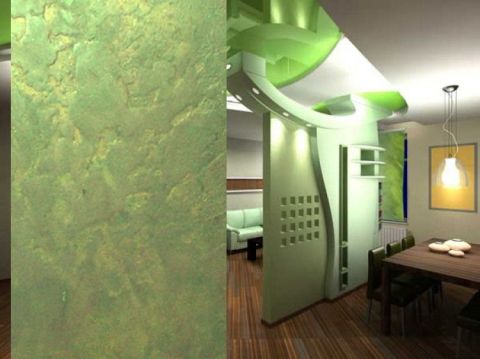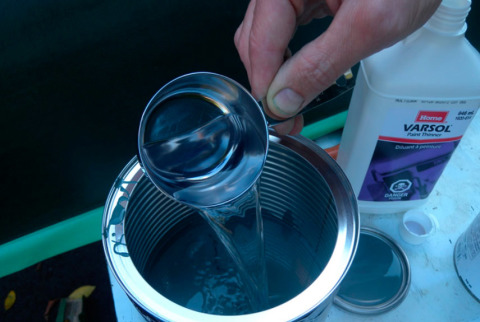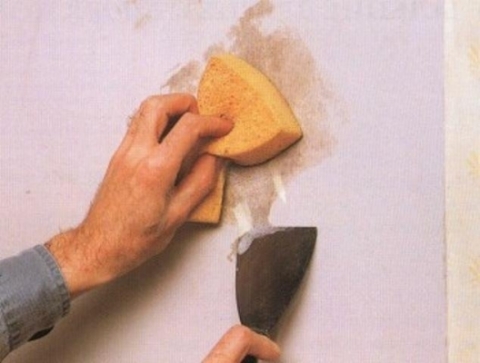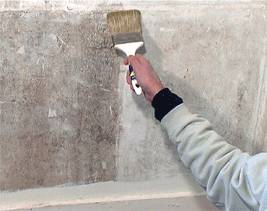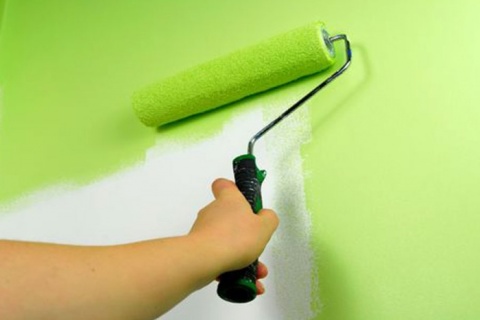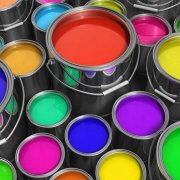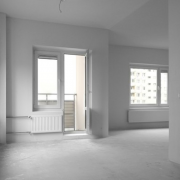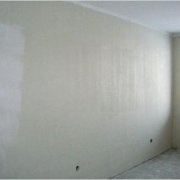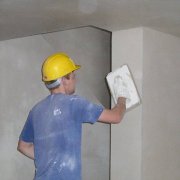How to dilute acrylic paint and how to do it right
Acrylic paints than to dilute should be decided immediately. And not only this. It’s worth figuring out how much it will suit you. After all, there are a lot of dyes and quite possibly another option is more suitable. Below you will find instructions on acrylic paint, you will learn about its properties and where it should be used.
The content of the article
Features and properties of acrylic paint
Currently acrylic paints in great demand, having a half-century period of use, have established themselves as reliable, high-quality finishing material. It is used when painting any surface of walls, ceiling and floor.
Suitable for application on plastered walls, made of metal and wood. Significant popularity, a number of advantages.
Let's immediately look at the positive aspects of this material:
- Environmentally friendly product - harmless and safe for people and the environment;
- Acrylic paints, very convenient in application, possess such qualities, important for repair work, as lack of a specific smell;
- In comparison with other varieties of paints, acrylic paints are rich in a variety of colors of shades so that you can choose for every taste and preference;
- Quick-drying paints;
- After staining, the surface is elastic, you can easily carry out cleaning, the paint does not erase;
- The material of the applied acrylic paint does not collect dust and various pollutants on its surface;
- Double effect: air easily passes, allowing the walls to breathe, but does not let water pass, saving the surface from damage;
- Reliability of use, service life exceeds ten years, depending on the correctness of the selected manufacturer acrylic paint.
- The price is also quite attractive. After all, everyone can afford her purchase.
The composition of acrylic paint includes such basic components as:
- Pigment;
- Binders;
- Water.
Emulsion is a synthetic material that serves as the main element of the binder for all dye models, based on polymer acrylics. The paint dries in the shortest possible time due to the intense evaporation of water.
The last step is to cover the entire surface where the paint was applied with an elastic film. It is stable even in the face of fierce frosts, there are no cracks on the surface, it is not typical for delamination and other side effects.
The distribution of acrylic paints by type is carried out in connection with their:
- Application;
- Resistance to external exposure;
- Whiteness level;
- Brilliance, brilliance;
Combined and universal acrylic paints are distinguished, depending on what is needed for a certain type of work, as well as the purpose of their use: application to external or internal surfaces.
Attention: When choosing acrylic paint, it is worth paying special attention to those qualities that its individual types possess: resistance to light and moisture, as well as physical impact.
The multidisciplinary application can boast of the creators of acrylic paints, the popularity of which extends not only in the construction industry, but also in art.Thanks to such paints, glass is decorated with painting (seeGlass painting with stained-glass paints: execution technology), patterns on ceramic dishes, painted on canvas or whatman paper, and even on products made of leather material.
This does not limit the extent to which popular acrylic paints are used: their use extends to brick materials, plastered surfaces, wood, concrete, as well as varnished areas of objects.
The types of acrylic paints should be carefully selected for painting the walls of the room with the optimum air temperature and humidity. Its qualities allow you to apply for painting a variety of surfaces: after applying plaster, drywall, various embossed areas.
What tool is suitable for diluting acrylic paint
First of all, it is important to understand the need to dilute acrylic paint with other substances before proceeding to the definition of these agents themselves.
- In its composition, acrylic paint has a fairly thick consistency, and therefore, it is imperative to dilute it before applying to various surfaces and objects. This process is the most important stage of work before painting, the essence of which is a convenient, high-quality, uniform distribution over the entire surface.
- It is important to understand that acrylic paint, which has been open for a long time, also needs to be diluted. If you do not follow all the rules for preparing paint for use, especially when restoring old furniture or creating a masterpiece, applying acrylic paint to its surface will leave traces of the tools used in the work. Therefore, it is necessary to dilute the paint, not only for its uniform distribution, but primarily in order not to spoil the furniture.
- We turn directly to the components themselves, with which they dilute the paint. The very first and most important is water, which is the basis of all acrylic paints. The trick is that even after dilution and staining, the surface is waterproof. Experts advise to thoroughly process and clean all the tools after completing the work.
Caution: When buying a dye, the instructions should be studied. So the manufacturer writes what solvents can be diluted, and how to do it. Basically, these are compounds produced by this company and their price is not small.
The point is that by mixing various branded components with paint, you can create a matte or glossy surface. In order not to make a mistake with the choice, you need to consult with professionals and get acquainted with the instructions for each type of paint, its properties.
The use of water to dilute acrylic paint: proportions and features
Having settled on the choice of a water base as a diluent for acrylic paint, you should study the recommendations for its use in more detail.
It is important to achieve the correct consistency and proportions so as not to spoil the paint and its basic properties:
Caution: Only diluted water is used for dilution. There should be no additives. Also, be sure to check the proportions on a small amount of dye.
- First we make a probe. To do this, use a pipette or a syringe. We need to accurately determine the proportions. It is also worth taking a small bottle for paint.
- Immediately try one-to-one dilution. This is the most common option. But here it is worth saying, if you need a cool dye, then it is worth starting dilution with a smaller volume of water.
When painting, you need to apply more than one coat, and you will need several options for the dye, different in viscosity.
We do everything as follows:
- Immediately dilute the dye in a proportion of one to one. After all, the first layer will be the base. This will be the basis for subsequent application.This composition does not stick to the brush and lays well on the application base. Also, the layer is uniform and without smudges;
- You can also continue to do the proportion and one to two. The paint adheres well to the brush, but the layer is thinner. Here you need to monitor smudges and smear the dye more carefully. This dilution option is suitable for the second layer;
- If you add more than three times the water, then it will be quite a liquid mass.. Moreover, the concentration will not be high and the dye will be light. This composition does not stick to the roller or brush. It is suitable in places where there are cracks, or steep transitions. Then it penetrates everywhere.
So the more water, the less concentration. But the surfaces are different. If the dye is used as soil, then sometimes it is needed and very liquid. For example, a tree.
If you just apply a thick paint, it does not absorb into the surface and will lie in a layer that can be easily separated. If for a start it is impregnated with a liquid composition, then it will penetrate the base and the subsequent layers will hold tight.
How to breed acrylic paint for painting on the wall
To create drawings, dye is used in tubes. It is quite possible for them to draw a picture on the wall, and if you are an artist, then you can safely apply it to the canvas. But here there are some peculiarities.
Let's look at the details of this breeding:
- In this case, a pipette is also used to adjust the dosage. The process takes place on a palette, it can be wet or dry. You can also breed for a sample simply in the cap of the tube;
- If you are drawing on canvas, or on a wall where there is already a foundation. Then breeding should be done on a wet palette. On dry dye it will dry extremely quickly;
- The ratio of water and paint will be determined by the desired brightness of the picture. The more water, the less brightness. Here you just need to experiment.
Recommendations from experts for diluting dyes
When diluting with water, one must be extremely careful. Always have a rag nearby, this is in case the paint is dripping or it will be necessary to remove it from the plane.
- It has already been said that water should be clean, but as practice shows, determining this by eye does not always work. Therefore, before use, it is worth putting water for a couple of hours to stand. All that is not needed will precipitate. It will also not be superfluous to filter it.
- With a large amount of work, it is better to use a spray gun for applying dye. Here you will need to choose the desired viscosity of the composition. It should lie down evenly and not be liquid, otherwise there will be smudges. Also pay attention to the solvent. Indeed, the sales market is full of counterfeit. Therefore, it is worth taking proven brands.
What can be diluted with acrylic paint should be decided immediately, because of this there will be changes:
- The solvent will affect the appearance of the dye:
- It will also affect the strength of the dye;
- Change is not just the structure, but also the color.
Caution: Before buying a solvent, the instructions must be studied. So the manufacturer writes what proportion is best to adhere to and what changes with the paint will occur.
- Also, when diluting, it is worth using a construction mixer. Indeed, in this case you will make the solution the most homogeneous;
- When preparing a dye, it is best to use a toner. With this substance, you can not only withstand the color of the dye, but also give it the right tone. But you should not do the supplement immediately for the entire volume. First you need to make a small probe and select the desired concentration, and only then add to the entire volume;
- To apply the dye, you need to choose the right tool. This can be done with a brush, roller and spray gun (seeHow to use a spray gun: tips from professionals)But here it is worth remembering that the layer and uniformity of application will depend not only on the dye, but also on how you apply it. The thinnest and most uniform layer will be when using a spray gun, but here you can, with incorrect application, make smudges. But when using a spray gun, the dye will fall into hard-to-reach places;
Attention: Helmet must be prepared with a small margin. After application, you will need to tint and the same solution will be extremely difficult to prepare.
If the acrylic dye is dry
Many people know, leaving the dye after opening the jar, it dries. Indeed, in the course of time, the lead evaporates and the composition polymerizes and the question arises of how to dilute acrylic paints if they are dry. And this issue is being resolved, although it is necessary to work hard.
- If the dye does not dry very much, but simply becomes very viscous, then you just need to add water with alcohol and wait for it to dissolve. In this case, it will be necessary to stir it periodically;
- If the dye solidified strongly, then first of all its composition must be changed to powder. After all, after drying, it turns out just a separate big lump. Which will be difficult to dissolve. So we take a hammer, a chisel or something else and just break it. The smaller the grains, the better;
- Now fill in the hot water. But do not overdo it. We just need to warm the dye. Therefore, fill the water, mix and drain it. If there is no necessary density, does it again;
- If the paint warms up, pour hot water again and mix. After all, a heated dye will not cool the water and will dissolve faster.
Caution: You can dissolve the paint. But here it should be remembered that its characteristics change for the worse.
Using acrylic dye
Dissolution of acrylic paint, an important point. Indeed, the quality of the plane will depend on this in many respects. With a thick dye, streaks remain, with a liquid dye, the color will not be uniform. But no less important is the high-quality application. On the topic of coating the wall, experts give their recommendations:
The whole process is divided into three parts:
We are preparing the plane | At this stage, we need to make a plane on which the dye will lie flat. If you have cement plaster and it includes coarse river sand, then the plane will be embossed and the film of paint will repeat it, so the surface must be puttied. |
Apply the primer | Soil must be imposed necessarily. Otherwise there will be no high-quality adhesion of surfaces. |
Application of acrylic paint on the wall | This is the last step and you need to choose the right paint application tool. The uniformity of the layer depends on this. |
- Dilute the dye based on the application plane. You always need to do a test application and make sure the quality of the coating;
- You also need to understand what you will breed. If water gives a liquid composition, then it will change the color and structure of the dye. Therefore, it is not always suitable. If diluted with a solvent, then when painting a metal, this will be most optimal. Indeed, in this case, the coating will not flake;
- If when opening the paint you notice a film on the surface. Then you need preparation for application. The film is removed. The dye is stirred and filtered through gauze. The composition should be completely homogeneous;
- Carefully select the application tool. If this plane is not large, then it is quite possible to get by with a brush. But if you have a large amount of work, then for uniform application you will need a spray gun;
- When painting with a brush, never make a large angle of the brush with respect to the plane. Then you will get stripes;
- Application by brush is done evenly and without strong pressure;
- Also, when applying with a brush, do not strip in one direction.They must be constantly changed.
Caution: If painting is done in several layers. Then each subsequent one is applied after the previous one has completely dried.
You can dilute the facade paint and any other. It is important not to overdo it with the solvent. After all, you are changing its composition. But after watching the video in this article and the photo, you can do everything yourself and almost without errors.
